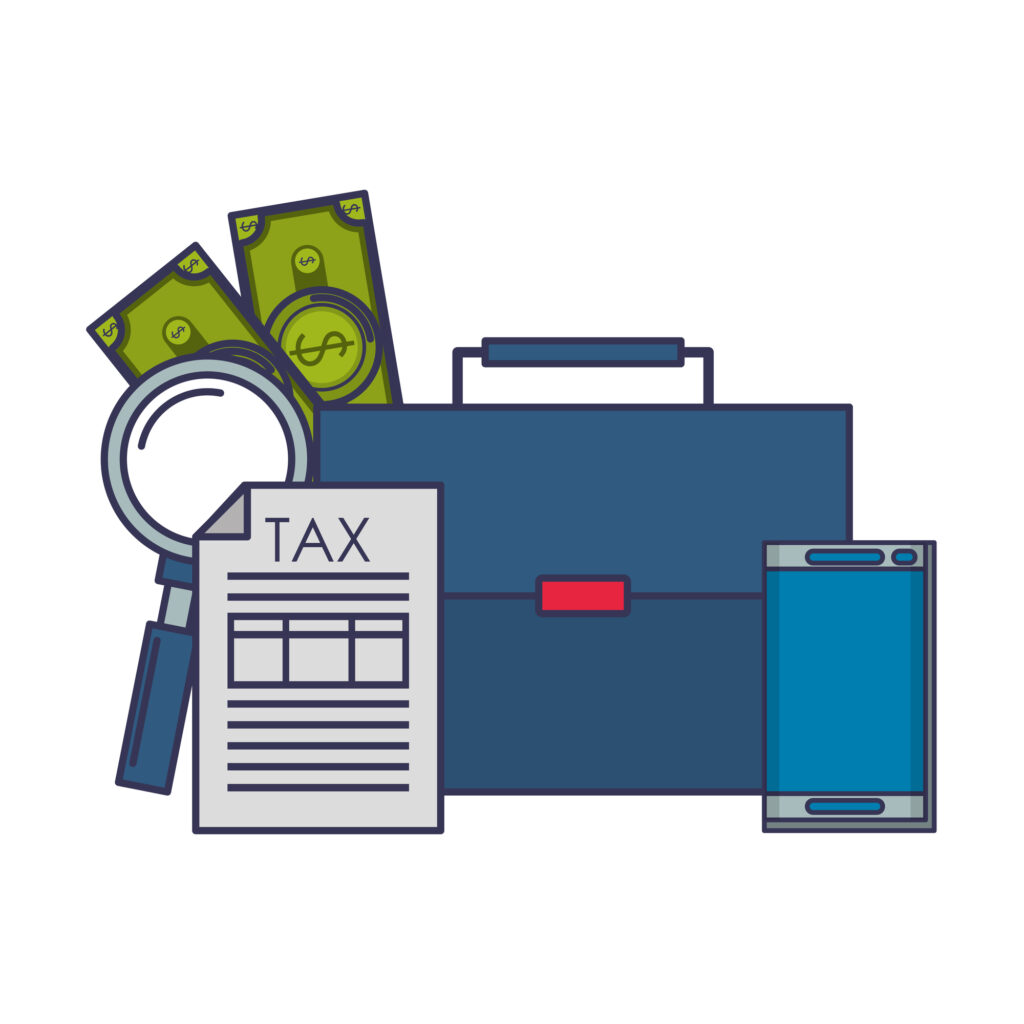 Taxes and the related chores—recordkeeping, filing, and paying—are perhaps the least favorite things for a business owner to do. Still, they’re unavoidable. Being in business requires you to keep books and records and then report income and expenses to the government. All of this takes considerable time and a lot of effort. Whatever you can do to make things easier, do it! Here are 5 ways to help.
Taxes and the related chores—recordkeeping, filing, and paying—are perhaps the least favorite things for a business owner to do. Still, they’re unavoidable. Being in business requires you to keep books and records and then report income and expenses to the government. All of this takes considerable time and a lot of effort. Whatever you can do to make things easier, do it! Here are 5 ways to help.
1. Simplified home office deduction
If you run your business from home, you may qualify to take a home office deduction. There are certain conditions for this, which are explained in IRS Publication 587. If you meet them, then you have a choice: deduct the actual expenses related to the home office space or rely on an IRS-set rate that the IRS calls a simplified option of $5 per square foot, up to a maximum of 300 square feet.
Using this simplified rate could mean a lesser deduction, but it will save hours of work to amass the information needed to deduct the actual costs of the home office space, such as personal electric bills. It eliminates the complication of allocating real estate taxes to the home office, factoring in the $10,000 annual “SALT limitation” on personally deducting state and local taxes. And it avoids depreciation recapture on the sale of the home because the simplified method doesn’t allow for depreciation.
2. IRS standard mileage rate
If you use your personal vehicle for business driving and are self-employed, you can deduct this cost as a business expense. As in the case of the home office deduction, there are 2 days to deduct the cost of business driving: the actual expense method or the IRS standard mileage rate. Either can be used, regardless of whether you own or lease the vehicle. But you can’t use the standard mileage rate if you operate 5 or more vehicles, you claimed accelerated depreciation, first-year expensing, or bonus depreciation for a vehicle you owned, or claimed actual expenses after 1997 for a vehicle you lease. Assuming you’ve met the conditions so far, then:
- Vehicle you own. To use the standard mileage rate for a car you own, you must choose to use it in the first year the car is available for use in your business. Then, in later years, you can choose to use the standard mileage rate or actual expenses.
- Vehicle you lease. You must use the standard mileage rate method for the entire lease period (including renewals) if you choose the standard mileage rate.
This rate takes the place of deducting gasoline, repairs, car washes, and more. For 2024, the rate is 67¢ per mile. Parking and tolls are separately deductible.
Note: Whether you use the actual method or the IRS standard mileage allowance, you need a record of business driving. What’s required for recordkeeping can be found in IRS Publication 463.
3. Sampling for mileage recordkeeping
To deduct expenses related to business driving, you must keep a record. This can be done with an app or a paper log. It can be burdensome to record each and every trip. But the burden can be lessened with an IRS-created shortcut: sampling. Here’s how it works: You keep an adequate record for parts of a tax year and use that record to prove the amount of business use for the entire year. You must demonstrate by other evidence that the periods for which an adequate record is kept are representative of the use throughout the tax year.
The IRS offers this example: You use your car to visit the offices of clients, meet with suppliers and other subcontractors, and pick up and deliver items to clients. There is no other business use of the car, but you and your family use the car for personal purposes. You keep adequate records during the first week of each month that show that 75% of the use of the car is for business. Invoices and bills show that your business use continues at the same rate during the later weeks of each month. Your weekly records are representative of the use of the car each month and are sufficient evidence to support the percentage of business use for the year.
Sampling allows you to extrapolate business use from a sample period: the first week of every month or 3 full months.
4. Using de minimis rule safe harbor election for equipment purchases
When your business buys machinery and equipment, you can write-off the cost using a variety of options. The basic method is depreciation, which requires tracking of this expenditure throughout the years. Other options include first-year expensing (the Section 179 deduction) and bonus depreciation (60% of cost in 2024), assuming eligibility for these options.
Yet another option is relying on the IRS-created de minimis rule. This means a full deduction of up to $2,500 per item or invoice. The write-off is treated as deduction for materials and supplies. But some caveats:
- The items deducted using the de minimis rule are not added to the balance sheet.
- You must file an election statement with your tax return.
More details about this de minimis safe harbor election on in IRS FAQs.
5. Accountable plans
If you reimburse employees for their business expenses, such as driving their personal car on company business, tools and uniforms, or internet for their home office, you can use a shortcut: an accountable plan. This means you reimburse them for their actual expenses, but don’t treat the reimbursement as compensation. It’s tax free to them and not subject to payroll taxes. The business claims a deduction for reimbursed expenses to the extent otherwise allowed.
An accountable plan isn’t a highly formal or separate thing like a retirement plan. It doesn’t have to be in writing, although it’s advisable to formalize it. The plan or policy statement must include 3 certain conditions:
- Expenses must have a business connection
- Employees must adequately account to the employer for the expense within a reasonable time
- Employees must return any excess reimbursements within a reasonable time
It’s a good idea for the plan to spell out what’s a “reasonable time,” how reimbursements and returning excess reimbursements are going to be handled, and the type of expenses that are reimbursable under the plan.
Note: Accountable plans are not employee benefit plans subject to nondiscrimination rules. As such, it’s acceptable to make reimbursement arrangements only for owners-employees or management personnel, or different reimbursement arrangements for different types of employees.
Final thought
As Max Baucus, a U.S. senator for 35 years, noted, “tax complexity itself is a kind of tax.” It surely saps time and money from business owners. Anything that can be done to simplify tax obligations is a plus. Hope this information has helped you.
For more information on recordkeeping, see a few blogs here.


